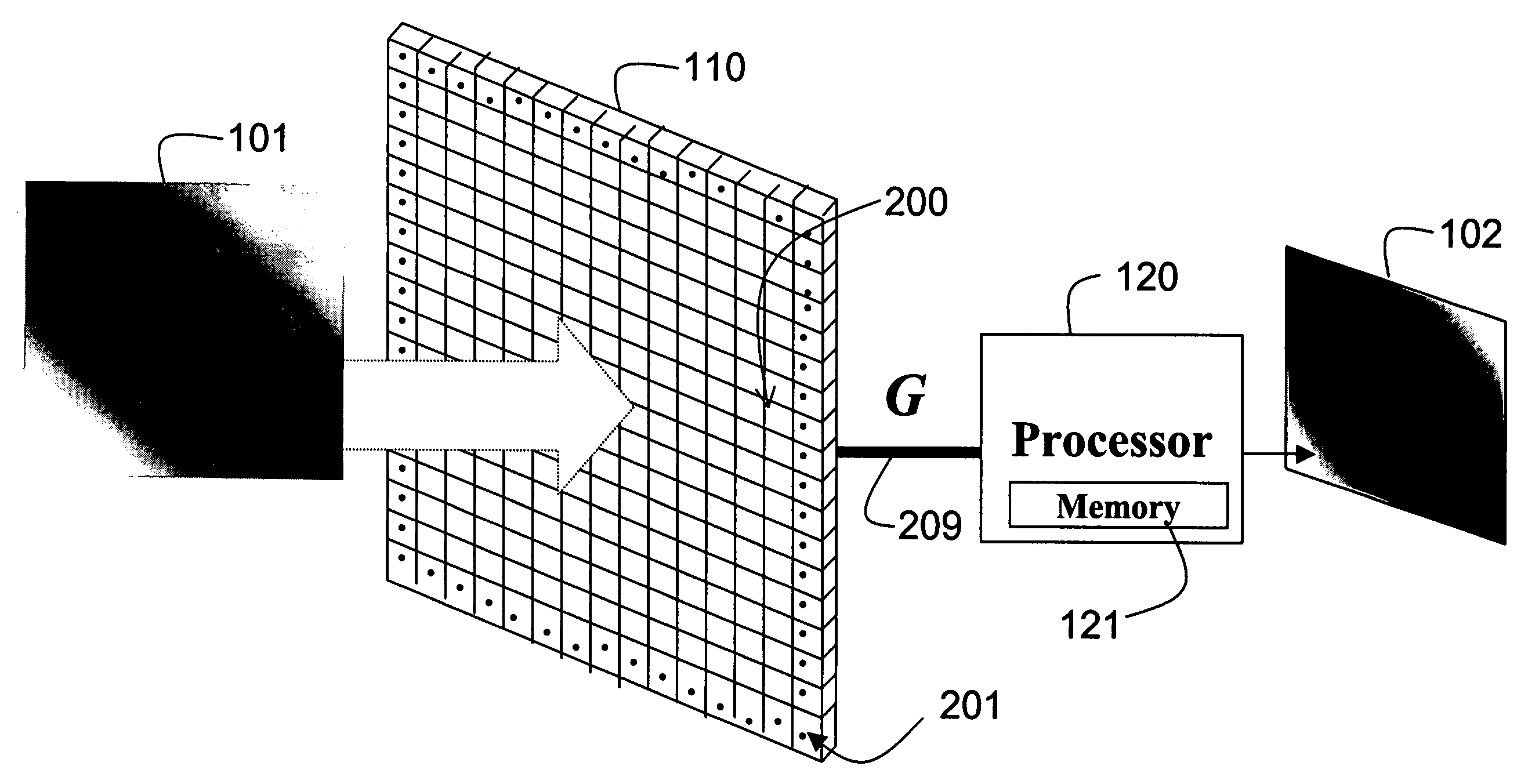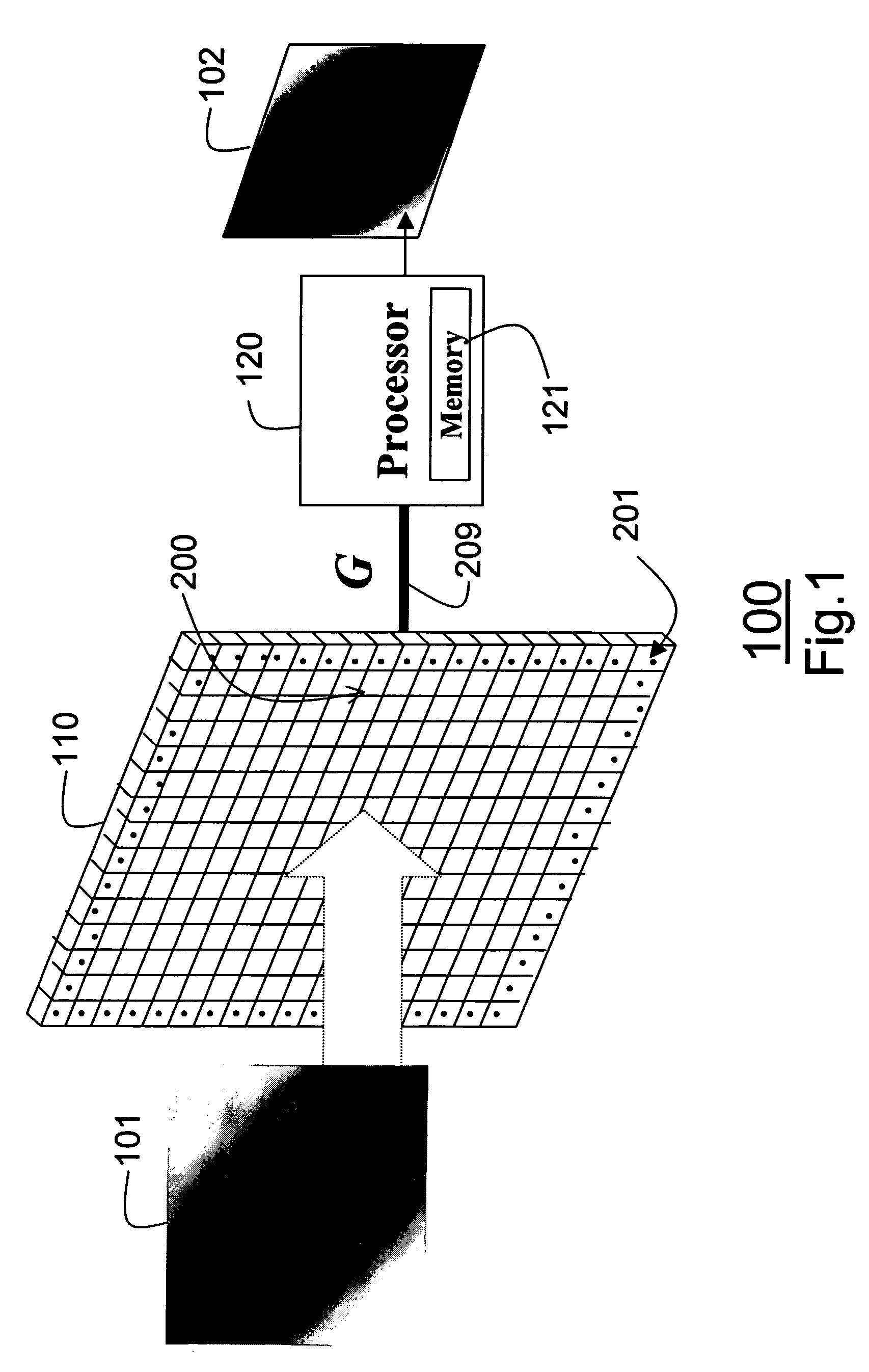Camera for directly generating a gradient image
a technology of gradient image and camera, applied in the field of sensing energy fields, can solve the problems of noise, motion blur, noise, and motion blur of both conventional analog and digital cameras, and achieve the effects of reducing quantization noise, reducing common-mode noise, and reducing nois
- Summary
- Abstract
- Description
- Claims
- Application Information
AI Technical Summary
Benefits of technology
Problems solved by technology
Method used
Image
Examples
Embodiment Construction
System Overview
[0045]FIG. 1 shows a system 100, according to our invention. The system senses an energy field 101 and generates a digital output image 102 representing the sensed energy field, e.g., electromagnetic radiation, such as visible light.
[0046]Our system includes a set 110 of sensing elements 200. The set of sensing elements are spatially arranged in the energy field 101. For example, the elements 200 can be arranged at an image plane as an N×M array of elements as shown. Alternatively, the sensing elements can be arranged as an annular ring or cylinder 600, as shown in FIG. 6, to enable three-dimensional scanning of an energy field as used in medical and high energy physics applications. Other arrangements, such as 3D arrays, are also possible. In the preferred embodiment, the sensor elements 200 also include a set of boundary elements 201 at a periphery of the N×M array, as indicated by dots.
[0047]Gradient Sensing Elements
[0048]Each of our sensing elements 200 measures a...
PUM
 Login to View More
Login to View More Abstract
Description
Claims
Application Information
 Login to View More
Login to View More - R&D
- Intellectual Property
- Life Sciences
- Materials
- Tech Scout
- Unparalleled Data Quality
- Higher Quality Content
- 60% Fewer Hallucinations
Browse by: Latest US Patents, China's latest patents, Technical Efficacy Thesaurus, Application Domain, Technology Topic, Popular Technical Reports.
© 2025 PatSnap. All rights reserved.Legal|Privacy policy|Modern Slavery Act Transparency Statement|Sitemap|About US| Contact US: help@patsnap.com



